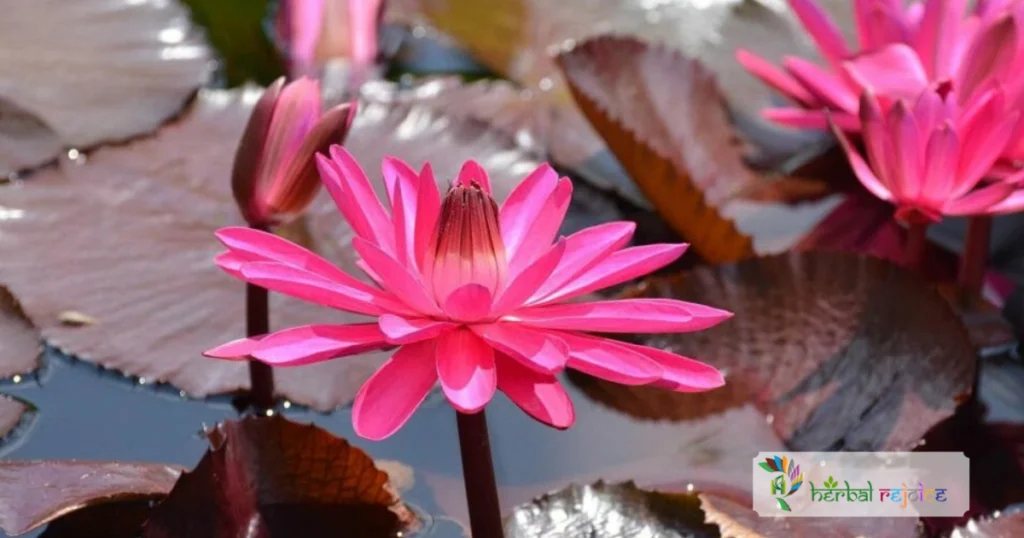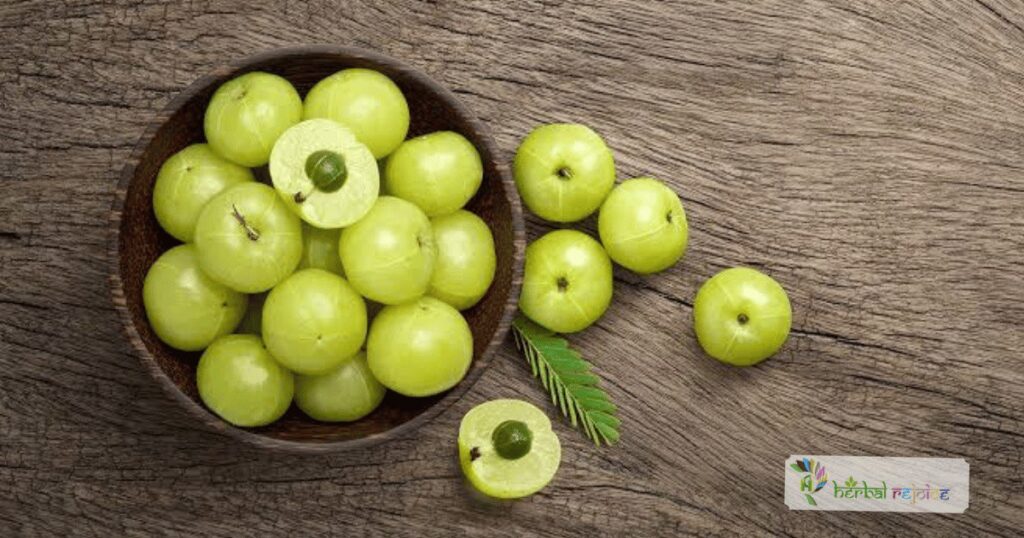Introduction
Lotus flower, scientifically known as Nelumbo nucifera Gaertn., is a remarkable plant that is native to warmer parts of India, where it can be found up to 1,800 meters in altitude.
It is also commonly referred to as East Indian Lotus or Sacred Lotus.
The Lotus flower is useful for treating bleeding piles and excessive menstrual bleeding, cholera, fever, painful urination, and palpitations of the heart.
Names and Habitat
In Ayurvedic medicine, it is known by various names such as Kamala, Padma, Nalina, Aravinda, Jalaja, Raajeeva, Pushkara, Ambuja, Abja, Pankaja, Pundarika (whitish), kokanada (red), and Indivara (Bluish).
In Unani medicine, it is sometimes used as a substitute for Nilofar.
In Siddha (Tamil) medicine, it is called Thaamarai or Ambel.
Traditional Uses Of Lotus
The lotus flower has been recognized for its various medicinal properties. The filaments of the flower have astringent and hemostatic properties, making them useful for treating bleeding piles and menorrhagia (excessive menstrual bleeding).
The flowers can be made into a decoction and used to treat cholera, fever, strangury (painful urination), and palpitations of the heart.
The rhizomes (underground stems) of the lotus plant can also be used in various ways.
They are given for piles, chronic dyspepsia (indigestion), and dysentery. When applied externally, they can help treat cutaneous eruptions, scabies, and ringworm.
The rhizome can be processed into arrowroot and given to children suffering from diarrhea and dysentery.
The root of the lotus plant is known for its astringent, diuretic, antiemetic (preventing vomiting), and cooling properties.
It is commonly used to treat dysentery, dyspepsia, piles, skin affections, and for its anticoagulant (blood-thinning) effects.
Chemical Components Of Lotus
The Ayurvedic Pharmacopoeia of India specifically recommends the use of dried lotus rhizomes, with roots attached at the nodes, for syncope (temporary loss of consciousness) and vertigo.
The flowers of the lotus plant have also been studied for their therapeutic potential. They contain compounds such as quercetin, luteolin, kaempferol glycosides, and their respective glycosides.
These compounds contribute to the flowers’ medicinal properties. The leaves of the lotus plant contain quercetin, isoquercitrin, and leucoanthocyanidin.
Another noteworthy compound found in the lotus plant is nuciferin, an isoquinoline alkaloid that has neuroleptic effects.
Additionally, the leaves contain alkaloids called nelumbin and roemerin, which are believed to be active agents with potential health benefits.

Dosage of Lotus Flower
In terms of dosage, the dried lotus flower can be used in the form of a decoction, with a recommended dosage of 12-24 grams according to the Ayurvedic Pharmacopoeia of India, volume II.
For the rhizomes, a powder form of 5-10 grams or a juice of 10-20 milliliters is recommended (API, Vol. III). The lotus seed can be taken as a powder of 3-6 grams, and the lotus flower can be consumed as a juice of 10-20 milliliters.
Conclusion
In conclusion, the lotus flower (Nelumbo nucifera Gaertn.) is a medicinal plant with numerous health benefits.
Its various parts, including the filaments, flowers, rhizomes, and even the roots, possess therapeutic properties that have been recognized and used in traditional medicine systems such as Ayurveda, Unani, and Siddha/Tamil.
From treating bleeding piles and menorrhagia to providing relief from dysentery and dyspepsia, the lotus flower has proven to be a valuable natural remedy.
Its rich content of compounds such as quercetin, luteolin, kaempferol glycosides, isoquinoline alkaloids, and more, further contribute to its medicinal value.
Whether used in the form of a decoction, powder, or juice, the lotus flower continues to be celebrated for its healing potential.
Frequently asked Questions(FAQs)
What is the scientific name of the lotus flower?
The scientific name of the lotus flower is Nelumbo nucifera Gaertn.
Where is the lotus flower native to?
The lotus flower is native to warmer parts of India.
What are some other names for the lotus flower in Ayurvedic medicine?
In Ayurvedic medicine, the lotus flower is known by names such as Kamala, Padma, Nalina, Aravinda, and more.
What are some medicinal uses of lotus flower filaments?
Lotus flower filaments have astringent and hemostatic properties, making them useful for treating bleeding piles and menorrhagia.
How can lotus flowers be used in treating cholera, fever, and other conditions?
Lotus flowers can be made into a decoction and used to treat cholera, fever, strangury, and palpitations of the heart.
What are some uses of lotus rhizomes?
Lotus rhizomes can be used for treating piles, chronic dyspepsia, dysentery, cutaneous eruptions, scabies, and ringworm.
How are lotus rhizomes processed and used for children with diarrhea and dysentery?
Lotus rhizomes can be processed into arrowroot and given to children suffering from diarrhea and dysentery.
What are some properties of the lotus plant root?
Lotus plant root has astringent, diuretic, antiemetic, and cooling properties.
What conditions can the lotus plant root be used to treat?
The lotus plant root is commonly used to treat dysentery, dyspepsia, piles, skin affections, and for its anticoagulant effects.
What compounds are found in lotus flowers?
Lotus flowers contain compounds such as quercetin, luteolin, kaempferol glycosides, and their respective glycosides.
What compounds are found in lotus leaves?
Lotus leaves contain quercetin, isoquercitrin, leucoanthocyanidin, nelumbin, and roemerin.
What is the recommended dosage of dried lotus flower according to the Ayurvedic Pharmacopoeia of India?
The recommended dosage of dried lotus flower is 12-24 grams according to the Ayurvedic Pharmacopoeia of India.
What is the recommended dosage of lotus rhizomes in powder form?
The recommended dosage of lotus rhizomes in powder form is 5-10 grams according to the Ayurvedic Pharmacopoeia of India.
What is the recommended dosage of lotus rhizome juice?
The recommended dosage of lotus rhizome juice is 10-20 milliliters according to the Ayurvedic Pharmacopoeia of India.
How can lotus seeds be consumed?
Lotus seeds can be taken as a powder of 3-6 grams.
What are some traditional medicine systems that use the lotus flower?
The lotus flower is used in traditional medicine systems such as Ayurveda, Unani, and Siddha/Tamil.
What compounds contribute to the medicinal properties of the lotus flower?
Compounds such as quercetin, luteolin, kaempferol glycosides, isoquinoline alkaloids, and more contribute to the medicinal properties of the lotus flower.
In what forms can the lotus flower be consumed?
The lotus flower can be consumed in the form of a decoction, powder, or juice.
What are the health benefits of the lotus flower?
The lotus flower has numerous health benefits, from treating bleeding piles and menorrhagia to providing relief from dysentery and dyspepsia.


